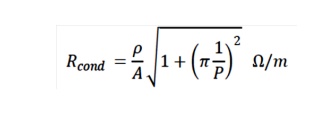Chapter: Transmission and Distribution : Transmission Line Parameters
Spiraling and Bundle Conductor Effect
SPIRALING AND BUNDLE CONDUCTOR
EFFECT
There are
two types of transmission line conductors: overhead and underground. Overhead
conductors, made of naked metal and suspended on insulators, are preferred over
underground conductors because of the lower cost and easy maintenance. Also,
overhead transmission lines use aluminum conductors, because of the lower cost
and lighter weight compared to copper conductors, although more cross-section
area is needed to conduct the same amount of current. There are different types
of commercially available aluminum conductors:
aluminum-conductor-steel-reinforced (ACSR), aluminum-conductor-alloy-reinforced
(ACAR), all-aluminum-conductor (AAC), and all-aluminumalloy- conductor (AAAC).

ACSR is
one of the most used conductors in transmission lines. It consists of alternate
layers of stranded conductors, spiraled in opposite directions to hold the
strands together, surrounding a core of steel strands. Figure 13.4 shows an
example of aluminum and steel strands combination. The purpose of introducing a
steel core inside the stranded aluminum conductors is to obtain a high
strength-to-weight ratio. A stranded conductor offers more flexibility and
easier to manufacture than a solid large conductor. However, the total
resistance is increased because the outside strands are larger than the inside
strands on account of the spiraling. The resistance of each wound conductor at
any layer, per unit length, is based on its total length as follows:

Related Topics